7 Best Product Analytics Tools for Your Product Management Stack
There are so many product analytics tools on the market, but how do you know which one is the best for you? Adding a product analytics tool to your tool stack is probably one of the most important tool choices you’ll make. Understanding your users’ behavior is ultimately what will lead you to either success or failure.
When you’re building a product you’ll constantly be asking questions like:
- Are we actually solving the problem we want to solve?
- Are our users using our features?
- Could the user experience be better?
- Was the last launch successful?
- When do our users churn?
You don’t need to carry on nodding along with the questions. I know they’re endless, and trying to make sense of your user data is no small task. That’s where product analysis comes in and can be really beautifully visualized in a product analytics tool.
I will start with a bit of an overview of why product analytics tools, then walk you through ProdPad’s top 7 product analytics tools. By the end of the article, you should have found the right one for you.
What data do you look at in a product analytics tool?
Simply put – product analytics is the analysis of user engagement within a digital product or service. Product teams can track, view, and understand large quantities of behavioral data, and make improvements to the product by understanding user experience and engagement.
The data points you’ll be looking at are:
- Feature usage
- User experience
- User data
- Session data
- Pain points and sticking points
- And many more
Why are these data sets important? Feature usage means that you know what people are using and what they aren’t. User experience data means you know exactly what is working and what isn’t, to the point where you see users churn or become super users. User data means you can validate your user personas – are your super users who you thought would be? Does marketing know how to talk to the right people? The uses are endless, to be honest. Session data is really important. You will be able to understand how many times people need to use your free trial to convert to a paid account or how many sessions before someone churns and then you can make changes to the onboarding process to try to combat it. Finally, seeing pain points and sticking points means that you can fix these issues and hopefully improve retention.
These are just some of the data points that you can collect with product analytics tools. By scratching the surface of the sort of questions you can ask your data we can all agree it’s pretty important to be able to understand it.
Why do you need product analytics tools?
Product analysis gives you, the product team, full visibility on what your users are actually doing, which is pretty darn important when it comes to understanding user behavior. Users don’t always represent their interactions accurately when they’re asked to describe them after the fact. Getting the correct user data is imperative to help inform your ability to build the right things.
Every product was born out of a problem needing to be solved. Each product that exists has a finite target audience. A product company is made up of teams all trying to get the target audience to see the product, want the product, buy the product, and use it, hopefully, upgrade their usage of it and never leave. That’s the dream, right?
Churn and retention are probably the most important metrics a company can track alongside monthly and annual recurring revenues because a company cannot grow if users leave your purchasing funnel as quickly as others enter it.
To put it simply – you have money coming in from users and you lose money when customers churn but if they are paying on an annual basis then you won’t see the effects of losing them for a year. So if you want to see massive growth in sales you need to reduce churn as much as is humanly possible.
There are two ways to solve that:
- Marketing – get as many users into the top of the funnel as possible
- Reduce churn – fix as many of the pain points as possible
As you know, you need a mixture of them both to be successful. You need new users to use the product and test whether your fixed pain points have reduced churn. You’ll also need your users to help you find more pain points to fix. That’s why product analysis is so important because you need a tool that can help you zero in on those issues that need fixing, help you increase your user retention, and make a better product in the process.
What are product analytic tools?
Product analytic tools exist to collect and analyze the user behavior within your product. Once you’ve started to collect all of your user data, you can glean insights that will help you improve your products and better fit the needs of your users. If used correctly, you can track and reduce churn, spot trends, and set KPIs against your data.
What are the 7 best product analytics tools?
When looking at product analytics tools, look for tools that are easy to use, that give you full visibility over your user base, and if your product is being used the way you want it to be used. We’ve looked at all the tools on the market and have created a summary of each, a breakdown of costs, and if we think it’s worth your time. Here are the seven in no particular order:
- Mixpanel
- Amplitude
- Pendo
- FullStory
- Heap
- Gainsight PX
- Google Analytics
Let’s dive in and see what each tool is all about.
1. Mixpanel
First up we have Mixpanel, which we use here at ProdPad. What we like about it is that it’s really customizable. You’ll often find our product team talking about WACs (weekly active contributors) and finding new ways to improve our customer retention.
But let’s get down to the brass tacks, the things that are awesome about Mixpanel are the funnels and reports that you can make to understand conversion rates, where your users churn, and who your super users are.
Their integrations are really extensive and should very easily connect with your data lake, customer data platform, or through one of their SDKs meaning it will be really easy to connect it all up to your stack.
Mixpanel also offers a freemium account with 100k monthly tracked users or their paid accounts start at $25 a month.
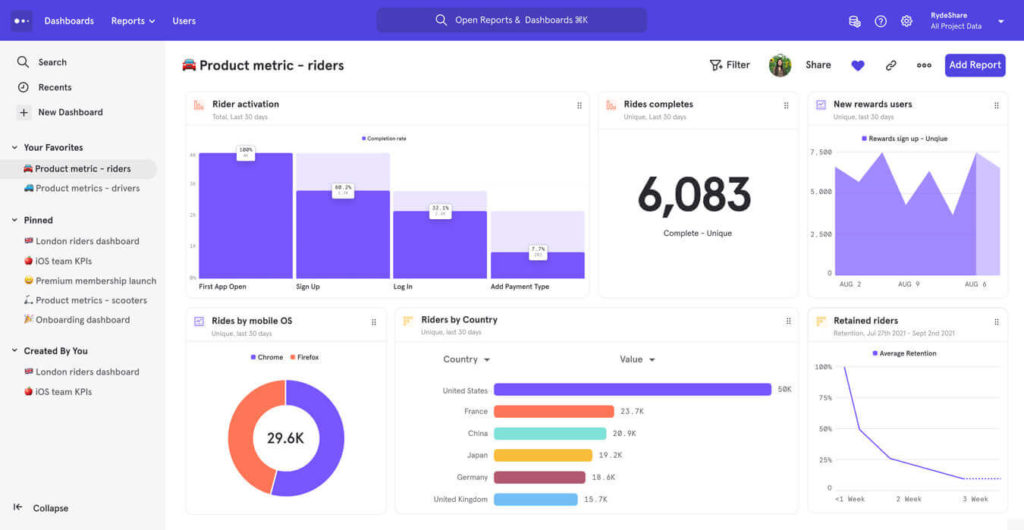
2. Amplitude
No list of product analytics tools would be complete without Amplitude. Not only are they one of the highest ranking tools on G2, but they’re also used by 25 of the Fortune 100. Definitely, one to check out.
What makes Amplitude special? Well, Amplitude pegs itself as a digital optimization system, where you’re able to track all user behavior and app usage in real-time. They integrate with pretty much everything – check out their integration page. They even have a search bar, it’s not messing around.
Amplitude offers a free account that includes up to 10 million monthly events tracked, the growth plan and enterprise plans are priced upon request.
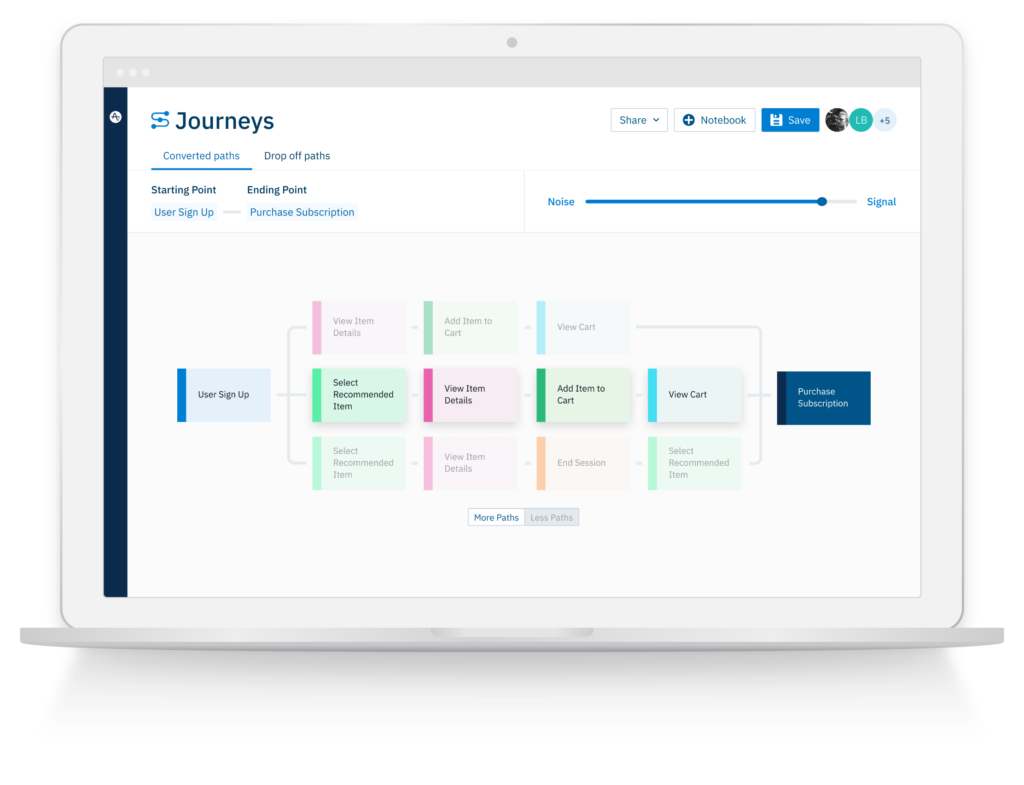
3. Pendo
When it comes to doing a product analytics tool audit, Pendo should be high on your list, because Pendo does more than analytics. Pendo is an end-to-end product engagement platform, not only can you glean insights from your user data you can also use it to set up in-app prompts to tell your users to use the features that they aren’t using.
This is the sort of tool that works for everyone but particularly a small team so you aren’t leap-frogging between tools and having the ability to create workflows to improve feature adoption in the same place you’re running reports is super valuable.
Pricing-wise, Pendo also offers a free version of the tool, and then pricing for all plans is available upon request.
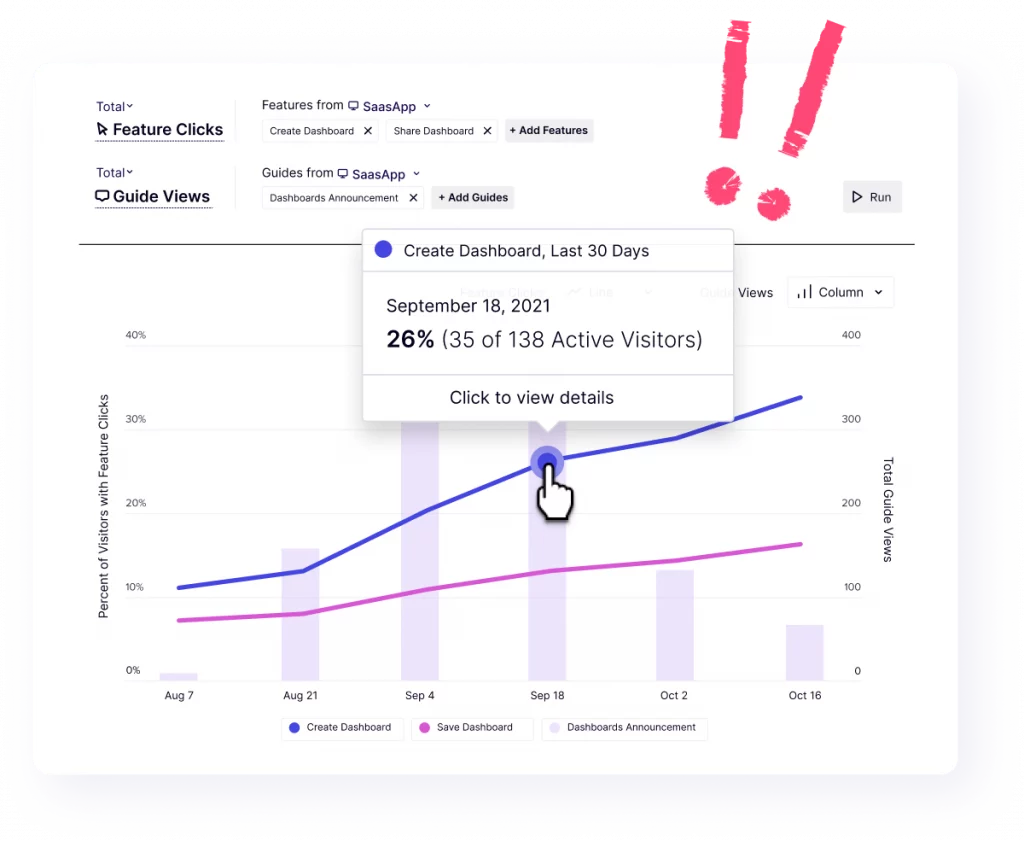
4. FullStory
FullStory is, in my opinion, really cool. We use it and I really enjoy seeing how people are engaging with our website.
They are digital experience intelligence specialists, so not only is it a powerful analytics tool, it captures so much data. I like being able to see someone using our app or website in real time or a little faster. You can literally see when someone gives up filling in a form or rage clicks. Using FullStory, you can create better user flows or fix things that irritate your users.
It has great integrations and works well with most tools you’ll find in your tool stack. Pricing-wise it’s not got a free version but it does have a free trial.
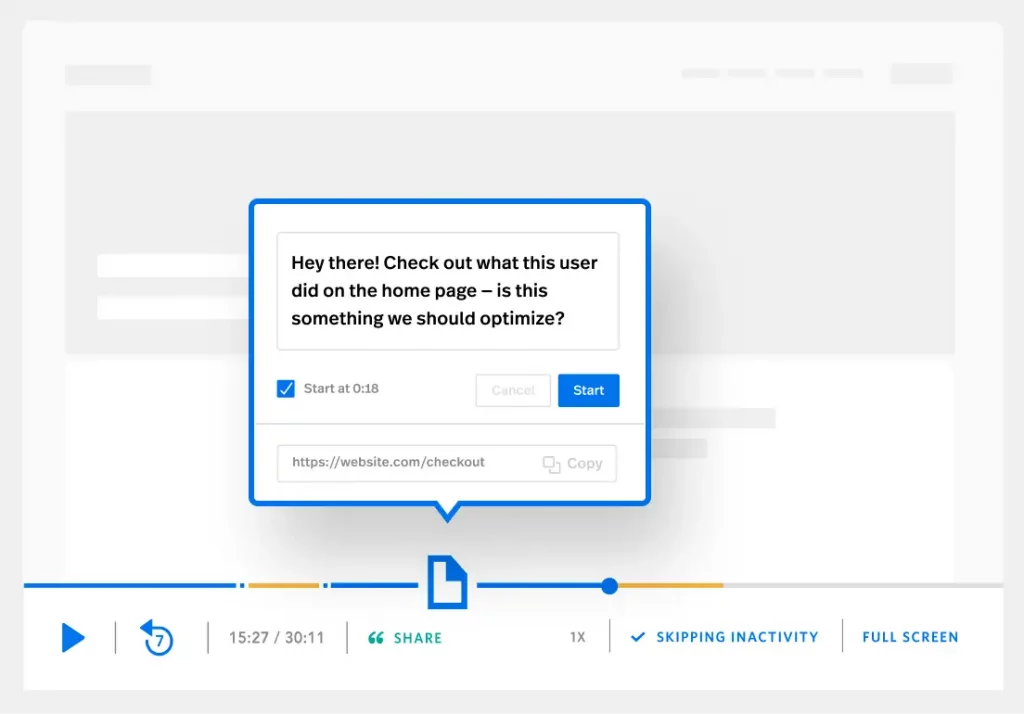
5. Heap
Heap is another very well-regarded tool that mixes together analytics and watching users interact with your app or website. They have heaps (like what I did there?) of happy customers and their case studies really speak for themselves. For example, Heap has helped Huel increase their conversions by 30% and decreased churn for PocketSuite by 30%.
They integrate with over 100 different tools and also have quite a nice competitor comparison part of their marketing site which is worth a look. The biggest selling point against the others is that like Pendo they integrate with your product with zero code and for smaller teams that’s music to their ears.
When it comes to pricing they have a free account but you can also have a free trial of their growth plan, all other plans are priced upon request.
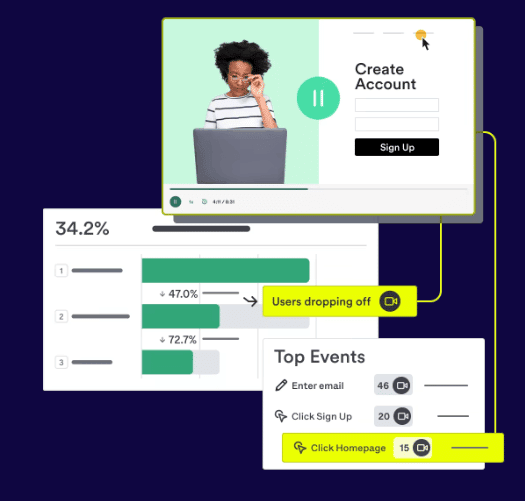
6. Gainsight PX
Gainsight is one of the tools that really focuses on product-led growth, by pulling together analytics, feedback, and user engagement into their platform. It is a bit of a one-stop shop for your analytics and user experience tool. Not only can you track everything your users are doing but you also can set up all the walkthroughs, and in-app guides to make your user experience better.
Gainsight is also one of the tools that incorporate user feedback into their tool, giving you the ability to send out surveys for NPS scores. This feature is definitely a nice-to-have element of the tool but I wouldn’t consider your customer feedback needs covered and if you want something really robust try Gainsight alongside ProdPad’s customer feedback solution.
In terms of pricing, Gainsight offers a free trial of the product management solution but if you want to try the full offering you need to talk to a sales representative for a demo and pricing conversation.
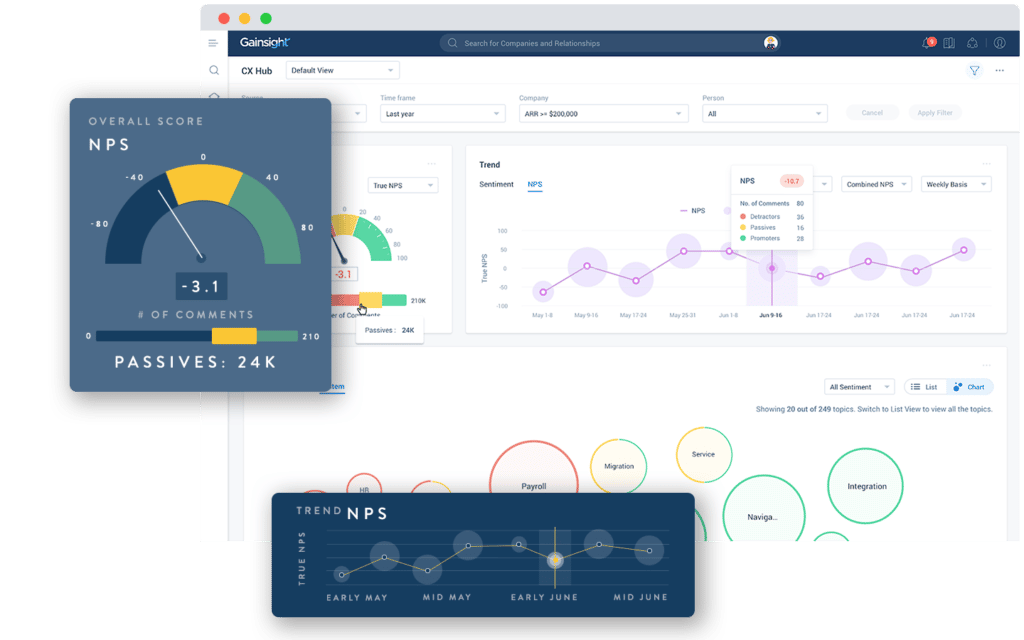
7. Google Analytics
Come on, I couldn’t make a list of product analytics tools without talking about the OG Google Analytics, love it or loathe it Google Analytics is a super powerful tool – and it’s free.
If you’ve got a web product Google Analytics can do an awful lot of the things that the tools on this list can do. You can understand where your customers are bouncing, and their demographics, and you can watch their movements around your site or tool. It also is part of the entire Google suite of tools so it connects seamlessly with Looker Studio etc.
The other reason I included Google Analytics is that not every product team has the budget to add a product analytics tool to their stack, but having Google Analytics means that price isn’t a blocker for understanding user behavior within your app.
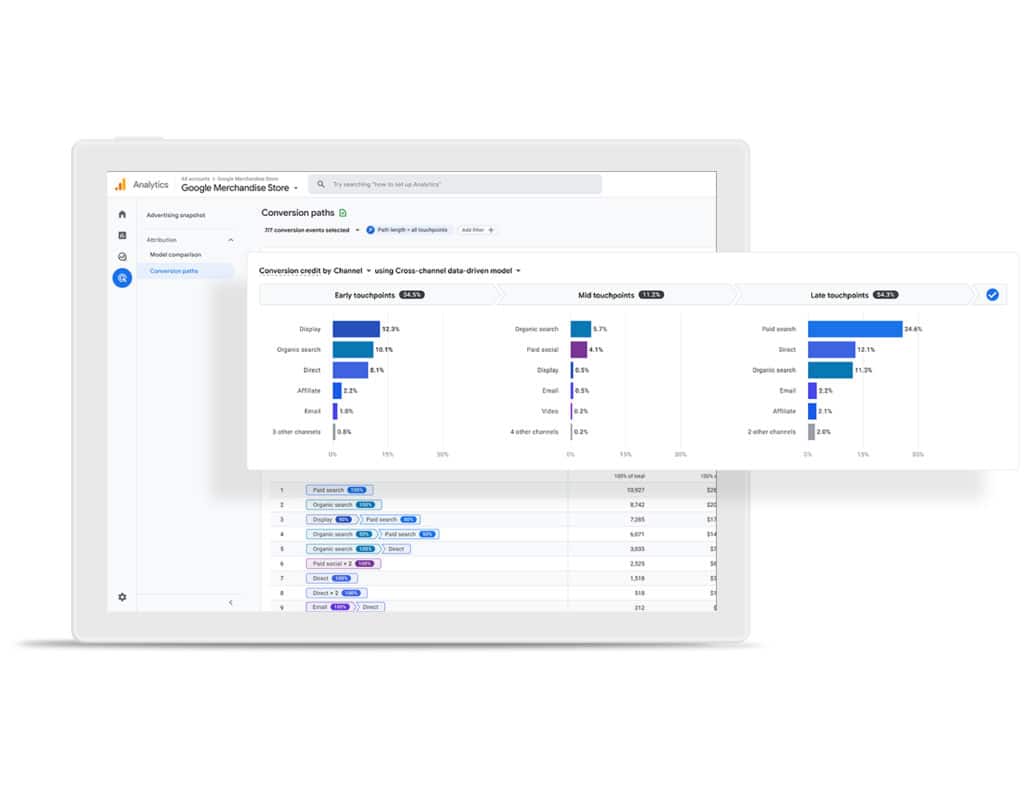
So now you’ve got your product analytics software covered why stop there? If you want to know even more about your customers and their needs then you need to start asking them for feedback and you can do that with ProdPad. Gathering feedback alongside your product analytics tool just makes sense if you want a full picture of what your customers are thinking as well as what they are doing. Check it out here and start a free trial.
So there you have it, folks, that’s ProdPad’s top 7 product analytics tools! There is definitely something for everyone, but as always if you think I’ve missed something I’d love to hear about it in the comments section below.
Sign up to our monthly newsletter, The Outcome.
You’ll get all our exclusive tips, tricks and handy resources sent straight to your inbox.
